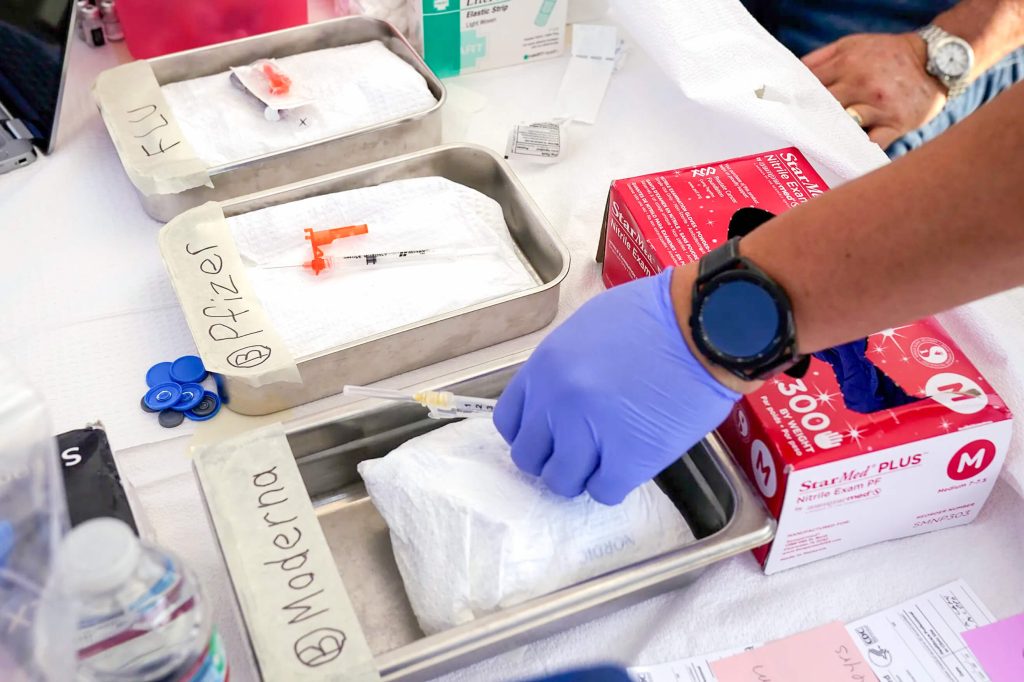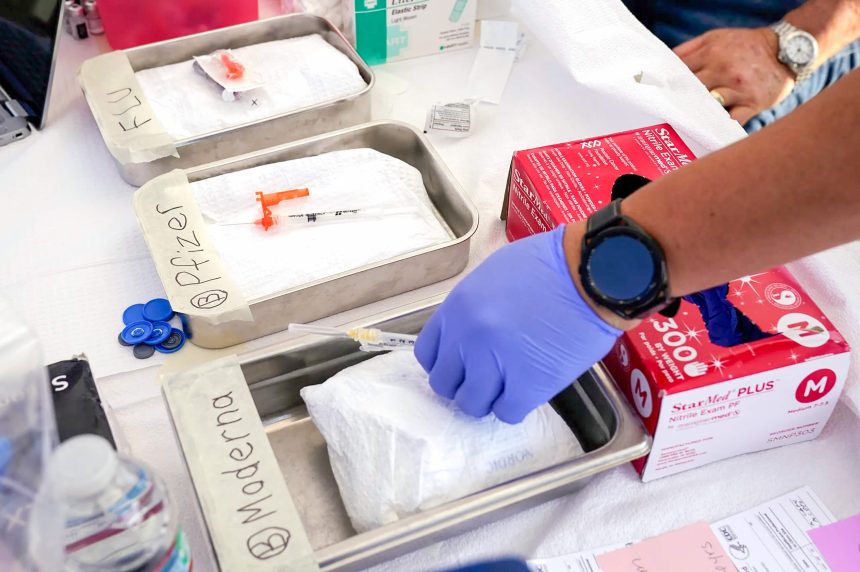Tripledemic
New vaccines for RSV and an updated booster for COVID-19 give Californians more tools to protect themselves from respiratory viruses this fall.
By SHREYA AGRAWAL, CalMatters
Don’t call it a tripledemic — yet.
Influenza, respiratory syncytial virus (RSV) and COVID-19 are circulating this fall, but not yet at the rate that worried public health agencies a year ago.
As we approach the time of winter when these diseases usually peak, around December to February, experts warn that the patterns can change at any time and advise people to take precautionary measures, such as getting vaccines.
For those who are concerned about respiratory viruses, there is good news: the Food and Drug Administration approved two RSV vaccines and another shot for use in vulnerable populations.
Several vaccine makers also have updated their COVID-19 boosters, which are recommended for those who are over age 5.
Public health experts generally expect a milder flu season this year. Last year was especially severe as social activities returned to normal and COVID-19 social distancing rules ended. Experts say that more than two years of staying at home and taking precautionary measures protected people from influenza viruses, but also reduced their immunity once they resumed normal social activity.
“We are seeing pretty decent matches with the flu vaccine, which is going to help and we haven’t seen a big take off locally and nationally yet of the flu,” said Dr. Marlene Millen, an internal medicine doctor at UC San Diego.
If you still haven’t gotten the latest vaccines for flu and COVID-19, it is not too late. Here’s what you should know about this cold and flu season.
What is the outlook for flu, RSV and COVID?
“The big answer is that it is uncertain,” said Dr. Peter Chin-Hong, infectious disease physician at UC San Francisco.
Experts say the exact patterns of infection of any of these respiratory viruses cannot be predicted due to several factors, such as human interaction, travel and preventative habits. According to the California Department of Public Health, it is too soon to know how severe each of the diseases will be this season.
“As more people are heading indoors for school, fitness routines, and festive gatherings, Californians are getting exposed to respiratory viruses,” said Dr. Tomás Aragón, director of the state Public Health Department in a press release. “Anyone can be affected by winter illnesses, however, some individuals, including older adults, people with weakened immune systems or chronic conditions, pregnant people and young children are at higher risk for severe illness and death.”
Chin-Hong said that while infections from COVID-19 have plateaued in the past few months, there may be an uptick in infections on the horizon, especially among vulnerable populations.
The state’s respiratory infections reports show that RSV infections are currently rising ahead of flu and COVID-19. But the state also has more tools to battle the disease compared to last year. The new RSV shots, combined with the leftover immunity from last year, Chin-Hong said, may result in a comparatively milder RSV season from last year.
What experts are worried about is the rate of infections for all three of these respiratory diseases peaking together at the same time, which can overwhelm health care systems. That scenario is now known as a “tripledemic.”
“Every year, that’s a possibility. I always cross my fingers that that doesn’t happen because we get very busy in the hospitals, especially in the clinics and other places,” Millen said. “Every year since COVID, it has been a concern that all three will kind of peak at once. And if that happens, then our health care system gets even more strained.”
Should I be worried?
Millen said even though infections could spread faster than predicted, there is no reason to panic.
“These aren’t new viruses, so all of the risks are already there,” she said. “The biggest thing is listening to what is going on and paying attention.”
Several treatments can help reduce serious infections and death rates. Experts also say that people should continue to exercise preventative measures such as wearing masks, washing hands and staying away from crowded places as they did during the height of the COVID-19 pandemic.
How do I know if I have flu, COVID-19 or RSV?
All three viruses have similar symptoms in that they attack the respiratory system and cause symptoms like cold, fever, cough, stuffy or runny nose, body ache and fatigue, as well as chills. Infections from all three viruses can also be asymptomatic.
Doctors recommend isolating if you develop any respiratory systems or fever at all, to avoid putting others around you at risk, especially young children and the elderly.
“If you’re sick, stay home,” Millen said. “Viral loads are really high in those first few days of illness and that’s when spreading illnesses happens, so just wait.”
What is the current guidance on vaccinations?
For influenza and COVID-19, the state Department of Public Health recommends vaccinations for all who are 6 months or older. Anyone over 6 months old should get the annual flu shot, while those 5 years and older should also get the updated COVID-19 booster this year.
For RSV, doctors recommend all those who are eligible to get vaccinated. This includes adults who are 60 or older, pregnant women, infants who are 8 months or younger and high risk children between 8-19 months old.
For those who do not have health insurance, California has several resources to get free vaccines, including federally qualified health centers, Bridge Access Program for COVID-19 vaccines, and the Vaccines for Children program.
What is happening with the new RSV vaccine?
Earlier this year, three shots were approved for RSV: two vaccines and an antibody shot.
The two vaccines are approved for use in elderly and pregnant women. The vaccine for pregnant women is recommended to be used between weeks 32 and 36 of the pregnancy and will reduce the risk of infection in newborns. The vaccine for seniors is available for all adults 60 or older as they are at higher risk from infections than younger adults.
The antibody preparation provides lab-prepared monoclonal antibodies to infants and young children at high risk from infections who may not be able to produce their own antibodies. This shot is recommended for all infants under 8 months as well as high-risk children between 8-19 months old.
There is currently a shortage of the antibody shot, which is causing concern among pediatricians, especially as RSV infections rise this winter.

For More Health News Visit www.zapinin.com/health.


